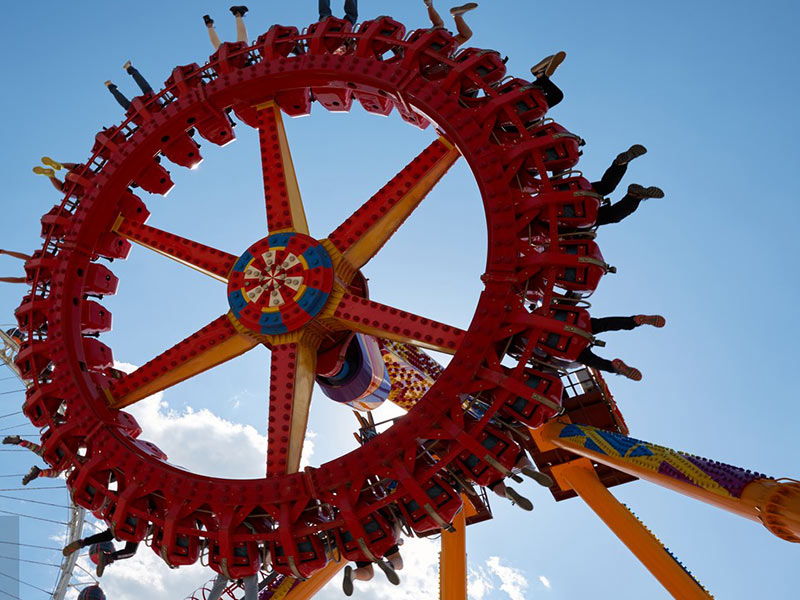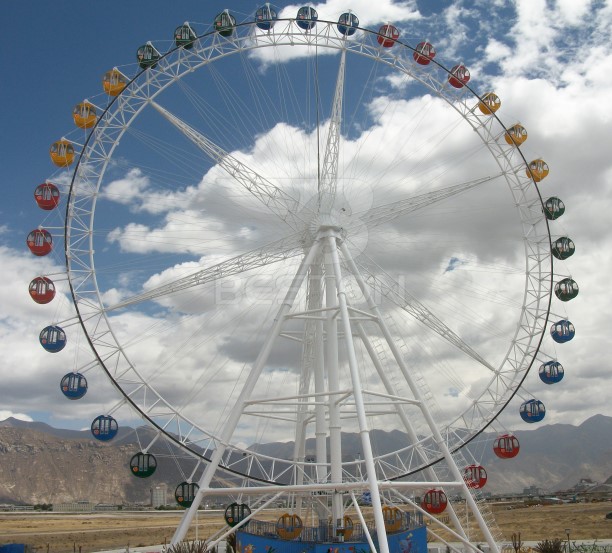Choosing large mechanical amusement rides requires careful consideration of various factors to ensure that the investment meets safety standards, provides an enjoyable experience for patrons, and aligns with your business goals. Whether you’re establishing a new amusement park or expanding an existing one, here’s a comprehensive guide to help you make informed decisions when selecting large mechanical rides.

1. Market Research: Before making any decisions, conduct thorough market research to understand the preferences and demographics of your target audience. Identify popular ride types and attractions in the amusement park industry, and consider local trends and cultural preferences. Such as giant frisbee ride for sale.
2. Space and Infrastructure: Assess the available space and infrastructure of your amusement park. Large mechanical rides often require substantial footprints and robust foundations. Ensure that your park can accommodate the size, weight, and technical requirements of the rides you’re considering.
3. Budget Considerations: Establish a realistic budget for purchasing, installing, and maintaining large mechanical rides. Consider not only the initial purchase cost but also ongoing expenses such as maintenance, insurance, and possible refurbishments. Factor in potential revenue generation from the rides as well. Click to know giant wheel price.

4. Safety Standards and Certifications: Safety is paramount in the amusement park industry. Ensure that the rides you are considering comply with international safety standards and regulations. Look for certifications from relevant authorities and conduct due diligence on the ride manufacturer’s safety track record.
5. Ride Capacity and Throughput: Assess the ride’s capacity and throughput, considering the number of riders it can accommodate per cycle and per hour. Higher throughput is essential for maximizing revenue and ensuring a satisfactory experience for patrons, particularly during peak times.
6. Target Audience and Ride Appeal: Understand your target audience and their preferences. Choose rides that appeal to a broad demographic to attract a diverse range of visitors. Consider factors such as age appropriateness, thrill levels, and the overall theme of your amusement park.
7. Maintenance and Reliability: Evaluate the maintenance requirements and reliability of the rides. Choose rides that are durable, easy to maintain, and have a good track record of reliability. A ride downtime due to maintenance issues can impact the overall guest experience and revenue.
8. Integration with Theming and Branding: Ensure that the chosen rides align with the overall theme and branding of your amusement park. Consistent theming creates a cohesive and immersive experience for visitors. Consider whether the rides can be customized to match your park’s unique atmosphere.
9. Operator Training and Support: Verify the availability of operator training and support from the ride manufacturer. Proper training is crucial for safe and efficient ride operation. Choose manufacturers or suppliers that offer comprehensive training programs and responsive customer support. Choose amusement park ride manufacturers.
10. Environmental Considerations: Consider the environmental impact of the rides, such as energy consumption and noise levels. Opt for rides that align with sustainability goals and adhere to environmental regulations in your location.
11. Future Expansion and Flexibility: Plan for future expansion by choosing rides that allow for scalability. Consider the flexibility of the ride’s design and its compatibility with potential additions or modifications to your amusement park.
12. Reviews and References: Research the reputation of the ride manufacturer or supplier by checking reviews, testimonials, and references from other amusement park operators. Learn from the experiences of others to make informed decisions.
In conclusion, choosing large mechanical amusement park equipment sale involves a comprehensive evaluation of safety, market fit, budget considerations, and long-term sustainability. By carefully considering these factors, you can select rides that enhance the overall guest experience, drive revenue, and contribute to the success of your amusement park.